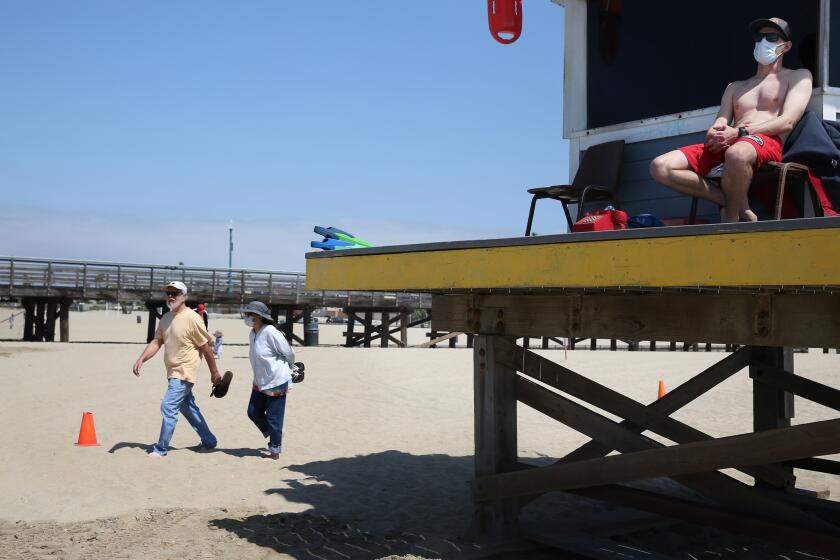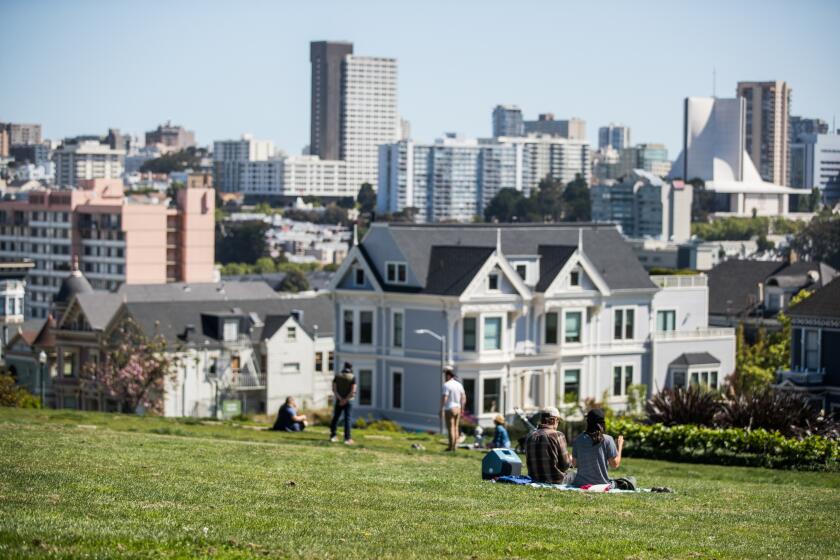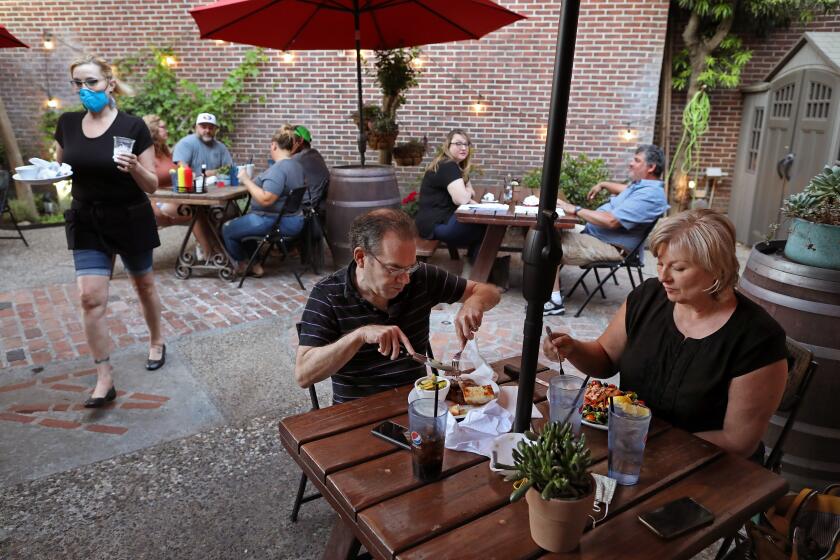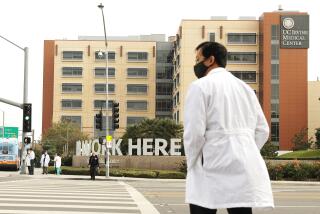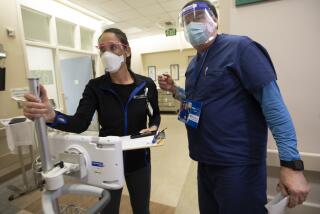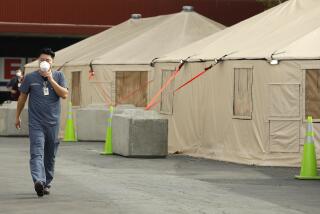Coronavirus cases continue to climb in Orange County
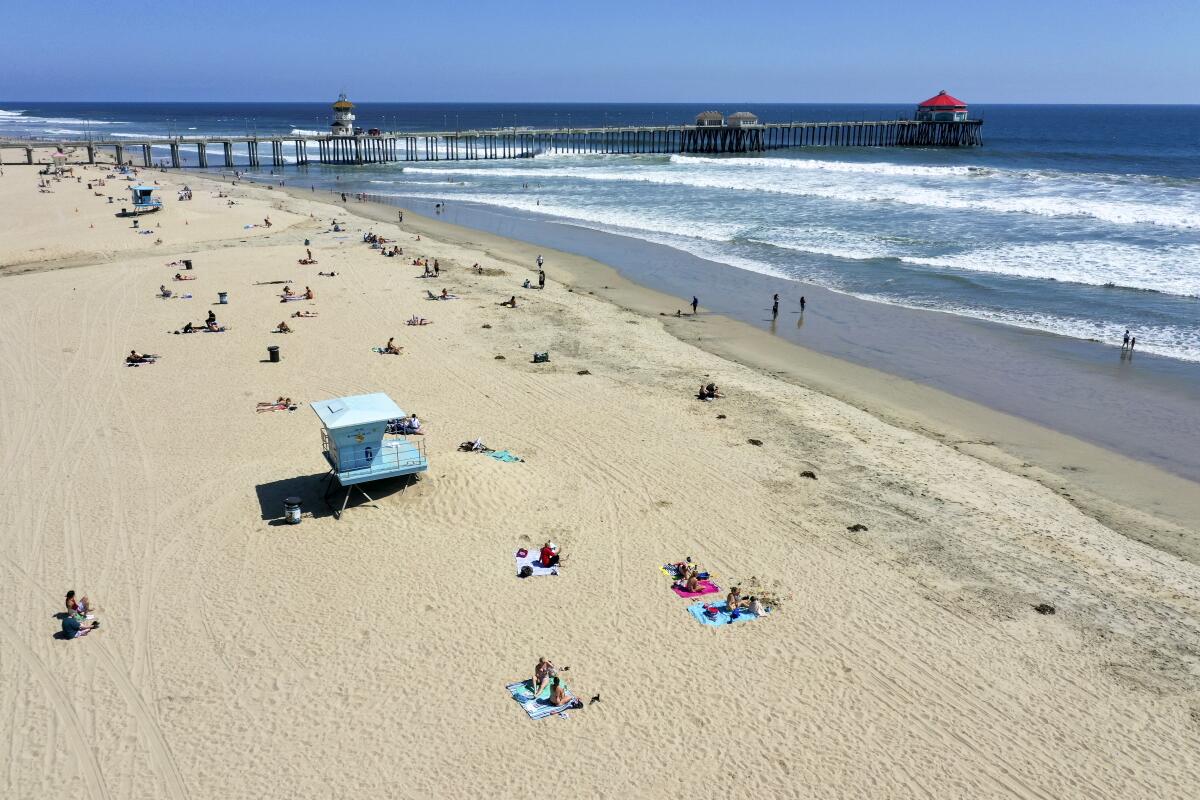
There are a number of reasons why Orange County continues to see new coronavirus infections, but there’s no evidence that the throngs of people who flocked to the region’s famed shoreline weeks ago have contributed to the caseload, officials said Monday.
“As of now, that is not something we are pointing to as a cause of cases,” said County Health Officer Dr. Nichole Quick.
The crowds over the weekend of April 25 and 26 — either a prime example of what not to do or a blip that was blown out of proportion, depending on who you ask — prompted Gov. Gavin Newsom to temporarily close the county’s beaches, a decision state officials said was meant to stave off potentially unsafe conditions that could worsen the spread of COVID-19.
Quick, though, said “correlation to the beach, that is not something that we have evidence of at this point.”
Regardless, Orange County has continued to see its weekly case count rise.
Between April 20 and 26, the county confirmed 441 new COVID-19 cases. That figure jumped to 664 the following week and 787 the week after that.
Though its overall number of cases also continues to rise, neighboring Los Angeles County has seen a dip in how many new cases it’s confirmed week-to-week over the same time period.
The number of coronavirus infections continues to climb in Orange County. Here’s the latest city-by-city breakdown.
Dr. George Rutherford, an epidemiologist and infectious disease expert at UC San Francisco, said he noticed a steep rise in Orange County’s cases in the days following the weekend of April 25 and 26.
Further investigation is necessary to determine whether the beaches — most of which have since reopened in a limited capacity — contributed to the spread of the coronavirus, however.
“But you know, just us looking at it, there was a big jump in Orange County that was temporally consistent with possible transmission from that crowd event,” Rutherford said.
Another factor is likely increased testing, though, as the county began notably ramping up its daily screening activity starting around April 28.
“As we test more, we’re likely to pick up more cases,” Quick said.
She added that the percentage of people who are tested and come back positive “has remained relatively stable and, overall, has been decreasing, which is good.”
“As we loosen up any amount of the stay-at-home order or put more people to work, we do expect to see an increase in cases,” she said. “So that would be something that would be expected.”
Experts attribute a rising forecast of coronavirus-linked deaths to the public growing more weary of stay-at-home orders and moves to roll them back.
The Orange County Health Care Agency confirmed 55 new coronavirus infections Monday, boosting the region’s cumulative total to 3,557.
The increase is the smallest number of new cases in a single day since April 28. But the county also reported only 196 additional COVID-19 tests — the fewest in any one day for which data are available.
The county’s death toll remained unchanged at 76.
As of the latest update, 196 people were hospitalized countywide and 77 of them were in intensive care.
Though health officials say maintaining physical distancing and avoiding gatherings are key to fighting COVID-19, Orange County hasn’t been immune from crowds.
About 1,500 demonstrators flocked to the Huntington Beach Pier on Saturday to call for an end to coronavirus-related economic and social restrictions — the second sizable protest in the city in as many weeks.
The governor ordered Orange County beaches closed Thursday despite opposition from local leaders who argue they should decide whether it’s safe to hit the sand.
Some businesses also have reopened their doors in defiance of state health orders. One, Nomads Canteen in San Clemente, has recently offered dine-in service despite the state’s prohibition.
When it comes to compliance, Orange County Executive Officer Frank Kim said the approach has been education, rather than bringing down the hammer.
“We’re not out here really trying to work with a heavy hand,” he said Monday. “We’re trying to understand what is going on with each of these entities and working with them to see voluntary compliance.”
California says bars that reopen without state permission could lose alcohol license
Other factors also can fuel increases in COVID-19 activity. The city of Newport Beach said its local case count recently spiked “due to, in large part, outbreaks inside a small number of local care facilities where patients and staff have tested positive.”
“County public health officers and Newport Beach Fire Department officials have met with the CEOs, head nurses and other top staff at the facilities to ensure that best practices are in place to mitigate further spread of the virus,” city officials said in a statement.
Newport Beach spokesman John Pope declined to identify where the outbreaks have occurred or say how many cases have been reported in those facilities. But between Friday and Sunday, the city’s COVID-19 case count jumped from 105 to 130 — an increase he said is “largely attributable” to the local care facilities.
“Our residents would be understandably curious as to why there was such a big spike, and we didn’t want people to speculate as to why it might have occurred,” he said.
More to Read
Sign up for Essential California
The most important California stories and recommendations in your inbox every morning.
You may occasionally receive promotional content from the Los Angeles Times.
